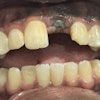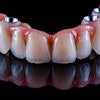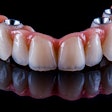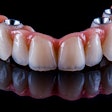Simplicity and time reduction in any treatment can increase patient acceptance and reduce the risk of complications. For dental implants, this means moving from the traditional two-stage surgical approach toward a one-stage procedure.
The one-stage approach is the subject of a study published in the current issue of the Journal of Oral Implantology, according to a press release.
The study (JOI, February 2012, Vol. 38:1, pp. 85-94) examined nine osteoporotic patients, ranging in age from 45 to 68, eight of them female, who had been taking oral bisphosphonates to treat their disease for fewer than three years, according to a press release. In one treatment, each patient received fixed full-arch dental prostheses supported by six implants. Immediate occlusal loading procedures were used, which require that motion at the bone-implant interface be kept below a certain threshold during healing.
Osteoporosis weakens bone and increases the risk of fracture, particularly among postmenopausal women. Bisphosphonates, an inhibitor of bone resorption, are widely used as a drug therapy for those with osteoporosis. Prolonged used of bisphosphonates, however, can lead to a painful refractory bone exposure in the jaws known as bisphosphonate-induced osteonecrosis of the jaw (BONJ).
This condition usually develops after dental treatment, indicating that oral surgery and implants placed into the jaw bone can precipitate BONJ. Although the process is not fully understood, it appears that prolonged use of bisphosphonates may suppress the bone's repair function, interfering with healing after implants.
This study demonstrated a 100% success rate, with all patients rehabilitated with a full-arch prosthesis supported by implants. Two years of follow-up found no adverse events of infection, tissue swelling, or lesions, showing this to be a viable one-stage treatment.



















